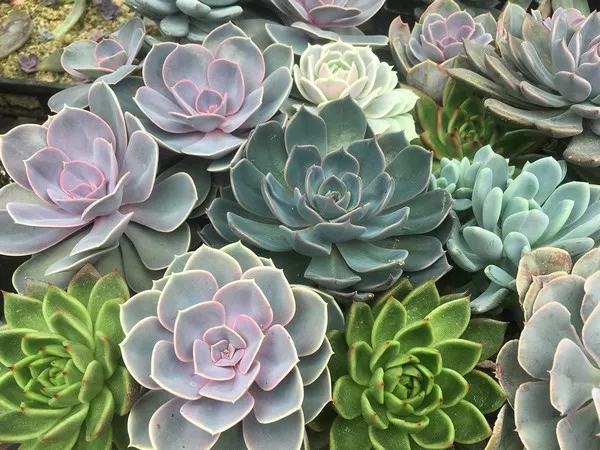Succulents have gained immense popularity in the world of gardening and home decor due to their striking appearance and ease of care. However, understanding their sunlight requirements is crucial to ensure their health and longevity. Getting the right amount of sunlight for succulents is a key factor in their overall well-being.
Understanding Succulent Sunlight Needs
Succulents are a diverse group of plants that have evolved to thrive in various climates, from arid deserts to lush tropical regions. Their sunlight requirements can vary depending on their natural habitat and specific species. To determine how much sunlight your succulents need, it’s essential to consider the following factors:
Origin and Species: Different succulent species come from different regions with varying sunlight levels. For example, desert succulents, like cacti, are adapted to full sun, while some forest-dwelling succulents prefer shade.
Season: Succulents may have different sunlight requirements during different seasons. Some may need more sun during their active growing season and less during dormancy.
Location: Your geographical location plays a significant role in the intensity and duration of sunlight. Succulents in regions with intense sunlight may require shade or partial sun to prevent sunburn.
Container vs. Ground: The type of planting location can affect sunlight exposure. Succulents in containers may need more protection from the sun’s heat compared to those in the ground.
Temperature: Extreme temperatures can impact a succulent’s ability to handle sunlight. High temperatures may require shade to prevent overheating.
Determining Your Succulents’ Light Preferences
To accurately gauge how much sunlight your succulents need, you can follow these steps:
Observe Their Natural Habitat: Research the native environment of your succulents’ species. This will provide valuable insight into their sunlight preferences.
Sunburn and Stress Signs: Watch for signs of sunburn or stress in your succulents. Sunburn appears as brown or white patches on leaves. If you notice these signs, your succulents may be receiving too much direct sunlight.
Growth Patterns: Healthy succulents will display sturdy, compact growth. If they become etiolated (stretching towards the light source), they likely need more sunlight.
Trial and Error: Experiment by gradually increasing or decreasing sunlight exposure until you find the right balance for your specific succulents.
Different Levels of Sunlight for Succulents
Now, let’s explore the various sunlight levels that succulents can thrive in:
Full Sun: Many succulents, especially those from arid regions, thrive in full sun. This typically means they require at least six hours of direct sunlight per day. Examples of succulents that love full sun include Echeveria, Sedum, and Agave. When grown in full sun, these succulents often display vibrant colors and compact growth.
Partial Sun or Partial Shade: Some succulents prefer partial sun or partial shade, which means they need about 4-6 hours of direct sunlight per day. These succulents may include Haworthia, Gasteria, and certain types of Aloe. Providing them with some shade during the hottest part of the day can help prevent sunburn.
Filtered Light: Succulents that hail from woodland environments, like some varieties of Kalanchoe or Sansevieria, thrive in filtered light. This means they should receive bright, indirect sunlight or dappled sunlight through a sheer curtain or light shade. Avoid placing them in harsh, direct sunlight, which can scorch their leaves.
Indirect Sunlight: Some succulents can do well with even less sunlight and are suitable for indoor settings. They can thrive in bright, indirect sunlight found near a window without direct exposure to intense rays. Examples include certain types of Crassula and Euphorbia.
Providing the Right Sunlight for Your Succulents
Now that you have a better understanding of succulent sunlight requirements, let’s explore how to ensure they get the right amount of sun:
Outdoor Placement: If you’re growing succulents outdoors, choose a location that aligns with their sunlight preferences. You can adjust their exposure by selecting spots with varying degrees of shade and sun throughout the day.
Indoor Placement: When growing succulents indoors, place them near a window that receives the appropriate amount of sunlight based on their needs. Rotate the pots regularly to ensure even growth.
Shade Cloth: In regions with intense sunlight, consider using shade cloth or a sheer curtain to provide filtered light or partial shade during the hottest part of the day.
Container Choice: If growing succulents in containers, select pots with good drainage. This allows you to move them around to find the optimal sunlight conditions.
Monitor Weather: Keep an eye on weather forecasts, especially in extreme conditions. Succulents may need temporary protection during heatwaves or severe cold spells.
Observation: Regularly inspect your succulents for signs of sunburn or stress. Adjust their sunlight exposure accordingly.
Seasonal Changes: Be mindful of seasonal changes in sunlight intensity. Succulents may need more protection during the scorching summer months and less during the milder seasons.
Conclusion
Balancing sunlight for succulents is essential to their health and growth. By understanding their specific needs, observing their behavior, and providing the right amount of sun, you can enjoy vibrant, thriving succulents in your garden or indoor spaces. Remember that each succulent is unique, so a bit of trial and error may be necessary to find the perfect sunlight conditions for your beloved plants. With care and attention, you can create an environment where your succulents flourish, showcasing their stunning beauty for years to come.


